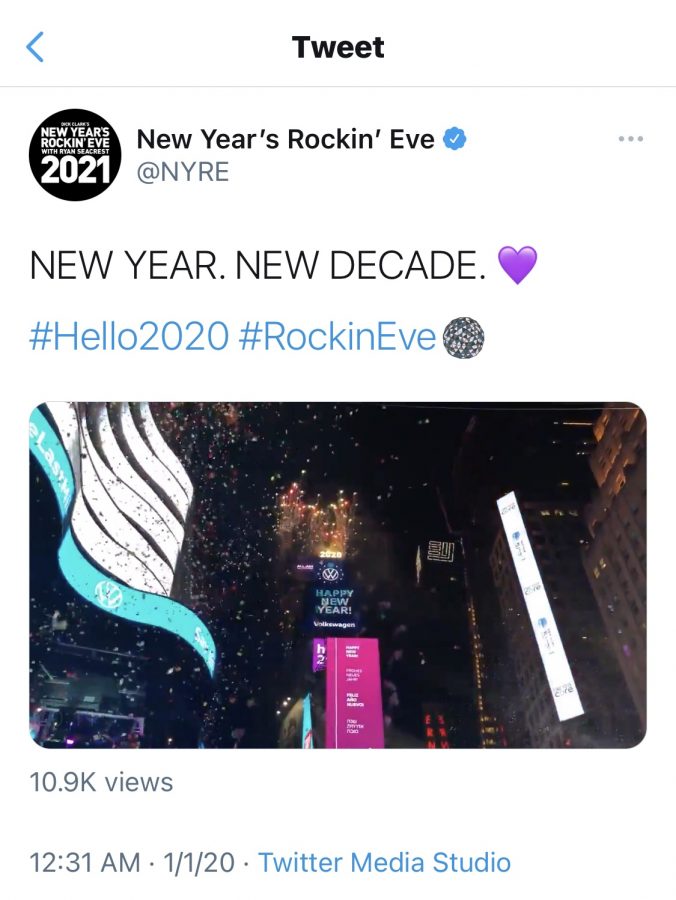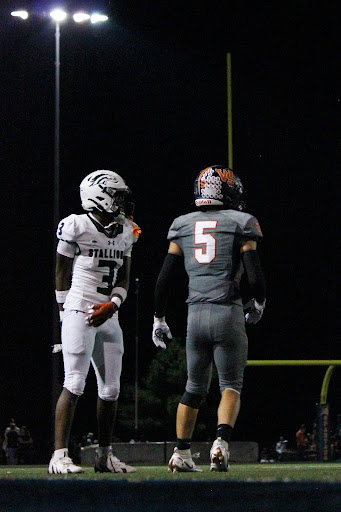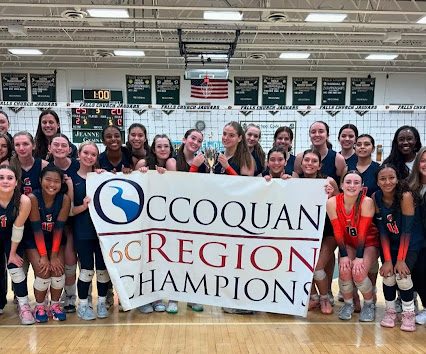A look back on 2020
Photo courtesy of New Year’s Rockin’ Eve
As the ball dropped in Times Square last New Year’s Eve, the world celebrated the beginning of a new decade.
December 18, 2020
As the clock struck midnight last New Year’s Eve, the world rejoiced in anticipation of the start of a new decade. Fireworks boomed overhead, champagne glasses clinked in celebration, and optimism filled the air. 2020 was to be the best year yet. Looking back twelve months later, however, things didn’t turn out quite as hoped.
January:
Seemingly before the confetti could even be swept off the pavement in Times Square, the first tragedy of 2020 reared its ugly head. The world turned its attention toward Australia, where bushfires that had been burning since September 2019 took a turn for the worse. By mid-January over 18 million hectares were burned, destroying thousands of homes and killing millions of animals.
As the fires burned in the Land Down Under, tragedy struck in the United States. On the 26th, NBA legend Kobe Bryant, his 13-year-old daughter Gianna, and seven others were killed in a helicopter accident in Calabasas, California. Bryant was only 41 years old and his death left the sports world in shock.
Meanwhile in China, a mysterious virus sent the city of Wuhan into an unprecedented lockdown on the 23rd.
February:
As the calendar flipped to February, many were more than happy to see the first month of 2020 in the books. On the 2nd, football fans watched as Patrick Mahomes led his Kansas City Chiefs to victory over the San Francisco 49ers in Super Bowl LIV.
On the 5th, President Donald Trump became the third president in history to be acquitted by the US Senate after being impeached.
On the 11th, the World Health Organization announced that the deadly virus ravaging China had been named COVID-19.
March:
As spring rolled around, life was flipped upside down. COVID-19 had spread to Europe and the United States, sending numerous countries into lockdown. The WHO announced the COVID-19 outbreak to be a pandemic and President Trump declared a national emergency sending every aspect of normal life into disarray. Schools and businesses were rapidly shut down, the stock market crashed, sporting events such as the NCAA tournament were canceled, and actor Tom Hanks became the first well-known celebrity to be diagnosed with the virus.
Locally, FCPS shut its doors as well, canceling classes for the foreseeable future on the 13th.
April – May:
Through most of the Spring, many Americans saw little other than the inside of their own homes due to the continued nationwide quarantine caused by rising cases and deaths.
FCPS started up classes again in a virtual setting. Students logged into their classes online twice-a-week during the fourth quarter, and many students at WS even took their AP exams online.
On May 25th, another tragedy struck. Minneapolis resident George Floyd was killed while in the custody of the police. Floyd, a 46-year-old African American man, had his neck knelt on for over eight minutes by white police officer Derek Chauvin. Protests soon began in Minneapolis after a video of his death surfaced on the internet.
June:
As the calendar turned to June, the calls for racial equality rose to a new level. On the 6th, more than half a million people took to the streets across the country demanding justice for George Floyd and the many others killed in acts of police brutality. Throughout the month of June, nearly 26 million people participated in the Black Lives Matter demonstrations.
On the 5th, Joe Biden officially clinched the Democratic Party nomination for president.
July – August:
As the United States struggled to control its COVID-19 cases, some attempts to return to normalcy were made during the summer months. The NBA returned from a four-month absence on July 30th in “the bubble,” an isolated environment set up by the league at Disney World.
On August 11th, Kamala Harris was selected as the VP candidate for Joe Biden, becoming the first Black woman and the first Asian woman on a major party’s presidential ticket.
September – October:
FCPS returned from summer break on September 8th, but remained in a virtual setting. Students at WS logged in to their classes for a first-day unlike any other.
On the west coast, wildfires blazed in California, Oregon, and Washington throughout September. The record-setting wildfire season saw over 5.8 million acres destroyed by the end of the month.
On September 18th, Supreme Court justice Ruth Bader Ginsburg passed away at the age of 84. Ginsburg, who was a leading advocate for gender and civil equality, had served on the Supreme Court since 1993.
President Trump was back in the news in early October when he tested positive for COVID-19 on the 2nd. Trump was taken by helicopter to Walter Reed Hospital where he stayed for three days during his recovery.
The City of Los Angeles won a pair of championships in October as the Lakers defeated the Miami Heat in the NBA Finals and the Dodgers defeated the Tampa Bay Rays in the World Series.
November:
With November came the long-awaited conclusion to one of the most anticipated presidential elections in US history. Despite COVID-19 concerns, voters turned out in record numbers to cast their ballots by mail, at early-voting centers, and on election day. By the end of election night on Tuesday the 3rd, however, a winner had still not been determined. It wasn’t until Saturday the 7th that Americans had an answer when Joe Biden was declared the next president and delivered his victory speech.
In mid-November, the world was given some hope as Moderna and Pfizer announced their vaccines were ready for FDA approval.
December:
On the 8th, a 91-year-old woman in the UK named Margaret Keenan became the first person in the world to be given the Pfizer COVID-19 vaccine.
Although 2020 won’t go down as the greatest year of all time, there were still many bright moments amidst the many tragedies, and with COVID-19 vaccines in sight, 2021 is sure to be far better.





